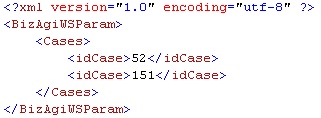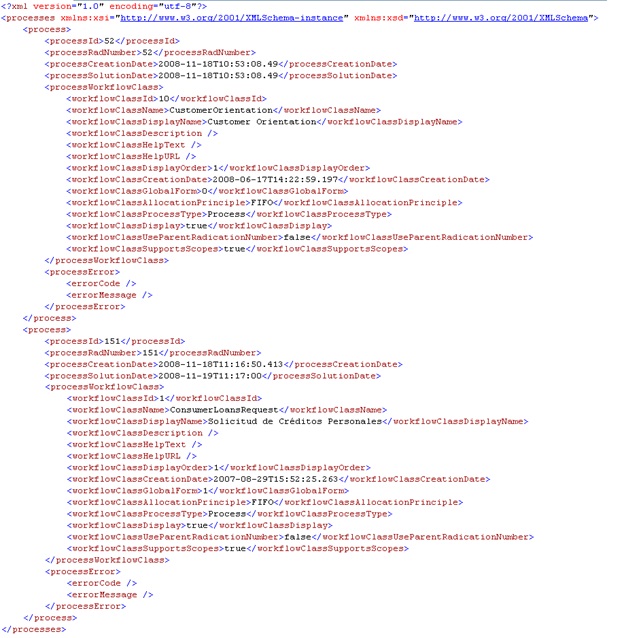ResumeCases
From Business Process Management, BPM and Workflow Automation Wiki | BizAgi BPMS
<keywords content="keywords"> resumeCases, resumecases, resumeCasesAsString, resumecasesasstring, resume Cases, resume cases, SOA Layer, soa layer, WorkflowEngineSOA, workflowenginesoa, Workflow Engine SOA, workflow engine soa </keywords>
Contents |
resumeCases
A method from the WorkflowEngineSOA web service used to restart cases that had been suspended in Bizagi from an external application. This document also applies to the method resumeCasesAsString.
Description
This method receives an XML with the case or cases identifier. The method resumeCases receives and returns an XmlDocument and resumeCasesAsString receives and returns an XML in string format.
Input Data
Here is the schema of expected XML (copy it from here):
Parameter 1 (XmlDocument or String Type)
BizAgiWSParam: Root node.
Cases: Contains all cases wanted to be resume.
idCase: Is the identification number of a case that will be restarted.
Example
With the following XML cases number 52 and 151 will be resumed:
Output Data
The schema of returned XML is this (copy it from here):
The response includes basic information of the processes to which the cases belongs. Here is the description of each data contained in the returned XML.
processes: Is the root node of the response and contains a child node process for each case included in the request.
process: Has information about the process to which the case belongs.
processId: Identification number of the case (idCase).
processRadNumber: Alphanumeric value with the case creation number.
processCreationDate: Case creation date.
processSolutionDate: Case solution date.
processWorkflowClass: The information in this node is all about the process (process metadata) not about the particular case.
workflowClassId: Identification number (or key) of the process.
workflowClassName: Name of the process.
workflowClassDisplayName: Display name of the process.
workflowClassDescription: Process description.
workflowClassHelpText: Process help text.
workflowClassHelpURL: Help URL for the process.
workflowClassDisplayOrder: The order in which the process will be viewed in Bizagi Studio.
workflowClassCreationDate: Creation date of the process.
workflowClassGlobalForm: Identification number of the process’s global form (zero if it is not configured).
workflowClassAllocationPrinciple: Reserved for future use.
workflowClassProcessType: Process type.
workflowClassDisplay: Indicates whether the process is visible or not.
workflowClassUseParentRadicationNumber: Indicates if a case of this process uses its own creation number or the same number as the parent process (if it is a subprocess).
workflowClassSupportScopes: Indicates is the process supports Bizagi "scopes"; which is an efficient method of data persistence.
processError: Contains information of errors occurred during the processing of this method.
errorCode: Code of the error, if one occurred.
errorMessage: Message of the error, if one occurred.
Example
Here is the XML in response to the one send as example:
Go to SOA Layer <comments />




